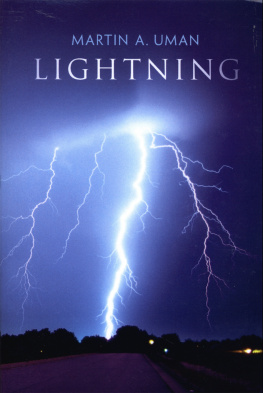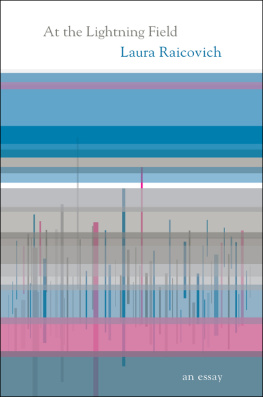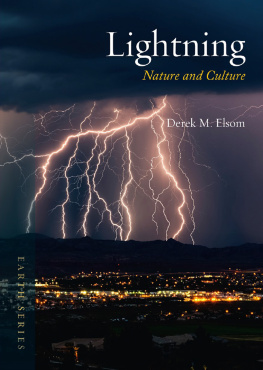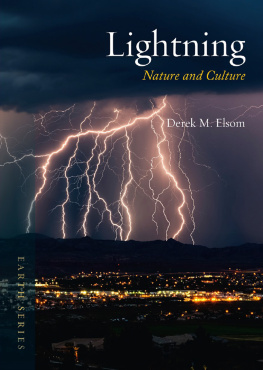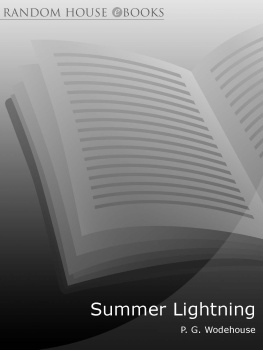Appendix A: Some Suggestions for Future Lightning Research
). In each of these areas of research more and better data are needed. In this appendix specific suggestions for future lightning research are presented. References to the literature given in this appendix are to be found in the bibliographies at the ends of the appropriate chapters.
1. Photographic measurements: Lightning photography with photographic film should be supplemented by photography by photocell and by electronic image-converter and intensifier cameras, thus providing an increase in sensitivity and time resolution from previous work. It would be worthwhile to obtain data on the absolute value of light output from the channels of the stepped leader, dart leader, and return stroke over the total time duration of these discharges. Measurements of the luminous formation of stepped-leader steps and of the propagation of luminosity associated with M components would be most valuable. More photographic data are needed regarding downward-moving leaders carrying positive charge as well as upward-moving leaders carrying both charge signs.
2. Electric and magnetic field measurements: More electric field measurements of stepped-leader field changes and appropriate analyses of these ).
There are some differences among investigators as to the field changes observed between strokes and the interpretation of those field changes (). For example, Malan (1965) reports that a slow, negative interstroke field change is observed in South Africa at distances of 25 to 100 km. Apparently no other investigator has reported a slow, negative field change between strokes for strokes observed at considerable distances. More measurements are needed.
Electric field measurements have been applied to the study of the intracloud discharge with the result that various investigators have obtained conflicting results (). The original work of Workman et al. (1942) indicated that the cloud discharges were essentially horizontal. Later Reynolds and Neill (1955) reported that the cloud discharges were usually inclined at about a 45 angle from the vertical and involved a moment change of the order of 10 coul-km. Similar moment changes have been found by Tamura et al. (1958). On the other hand, the majority of cloud-discharge field-change studies indicate a moment change of the order of 100 coul-km (Wilson, 1920; Wormell, 1939; Pierce, 1955a,b). Most researchers agree that in the cloud discharge usually the positive charge center is located above the negative charge center. Smith (1957) found that usually negative charge was raised during the discharge. Takagi (1961) and Ogawa and Brook (1964) found that positive charge was usually lowered. There are numerous other conflicting data regarding the cloud discharge and little doubt that more information on cloud discharges is needed.
Magnetic field measurements have been made by Hatakeyama (1936), by Meese and Evans (1962), and by Williams and Brook (1963) (). Williams and Brook (1963) report data on continuing currents and on stepped-leader currents obtained from magnetic field measurements. Additional measurements of this type would be very valuable. From magnetometer measurements, Meese and Evans (1962) derived values of charge transferred by a flash which were about an order of magnitude greater than those values usually determined from electric-field-change data. A resolution of this apparent discrepancy would be desirable.
In calculating the electric and magnetic energy radiated due to various lightning processes, the dipole approximation () is almost always used. It would be of some value to investigate the validity and effects of this approximation, particularly in its application to charge motion within the cloud (K changes) (Arnold and Pierce, 1964) and to leader-step phenomenon (Schonland, 1953; Hodges, 1954).
More radar studies of intracloud lightning processes of the type carried out by Hewitt (1957) (cloud discharges and about processes going on in the cloud during the time between cloud-to-ground strokes.
The radiation fields from lightning should be analyzed so as to determine stroke properties.
3. Electric current measurements: The very fine oscillographic data obtained recently by Berger and his co-workers (Berger and Vogelsanger, 1965) in Switzerland have added greatly to our knowledge of lightning currents. More detailed and corroborating data on stroke currents and their rise times are needed.
More statistical data on interstroke continuing currents are needed. It is important not to confuse interstroke continuing currents with the currents due to upward-initiated discharges. The latter currents were originally termed continuing currents by Hagenguth and Anderson (1952) who present statistical data for them.
In the absence of continuing currents, do small currents flow in the lightning channel in the time between strokes? McCann (1944) has reported that in most of the multiple-stroke flashes studied by him the channel current fell below 0.1 amp between strokes. Berger (1967) has reported that the current between strokes was measured to be less than 1 amp. Corroborating data would be valuable.
Leaders currents are generally estimated from charge motion and charge-motion times derived from electric-field-change data. Currents due to upward-moving leaders have been recorded by Berger and Vogelsanger (1965); a few currents due to downward-moving stepped leaders have been determined from magnetic field measurements by Williams and Brook (1963). More data are needed on currents in upward-moving and downward-moving stepped leaders and in dart leaders.
Almost all measurements of the time variation of lightning current, with the exception of the work of Norinder and co-workers, have been made near ground level and represent the current flowing at the base of the lightning channel. It is not apparent that the current in the channel an arbitrary height above the ground should be identical or even very similar to the current measured at ground level (). It would certainly be worthwhile to obtain lightning current waveshapes for positions in the channel above the ground contact. Perhaps an adequate theory of the return stroke will enable one to calculate the current in the channel.
There appear to be no studies of the currents associated with M components. Such studies would be valuable.
4. Spectroscopic measurements: Spectroscopic studies of the cloud-to-ground lightning return stroke with about 10- wavelength resolution have recently yielded values for the stroke temperature and other properties on a 2 to 5 sec time scale (Orville, 1966, 1968). It would be very desirable to obtain similar information on a shorter time scale and with better wavelength resolution. Better time-resolution would allow a more detailed determination of the temperature variation and a more accurate determination of the peak temperature. Better wavelength resolution would make possible an accurate determination of channel opacity as well as allowing an electron density determination to be made from measured Stark broadening of certain nitrogen ion lines. Data to corroborate that obtained from the visible spectrum should be obtained by extending the spectral range of the lightning spectroscopic studies as far into the ultraviolet and infrared as is possible. It would be most valuable to obtain spectroscopic data correlated with data on electrical current and electric field changes. With these data, thermodynamic properties of the channel such as temperature could be correlated with electrical properties such as current or charge transfer.
It is important to obtain spectra of the stepped and dart leaders. Such data are needed in the formulation of realistic theories of the leaders. See Appendix D for a report on the first stepped-leader spectrum obtained.
Next page
